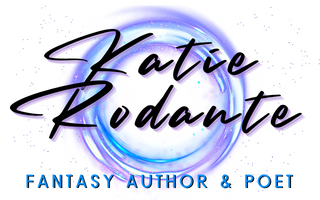Wreathbound Media Kit
This page holds book covers, a sell sheet, author bio, shareable social media and/or blog images, and discussion questions for my poetry collection Wreathbound.
Where to Buy Wreathbound (ebook format)
Direct | Amazon | Books2Read (all links)
Where to Buy Wreathbound (paperback format)
Direct | Amazon | Barnes & Noble | Bookshop | Books2Read (all links)
Other Places to Find Wreathbound Online
Katie Rodante Author Bio:
Katie Rodante is a poet and writer obsessed with storytelling and creativity. Her books include Wreathbound, Autumn Reveries, Woodland Witch, and her upcoming novel Fangs and Frosting. When she isn’t writing, she can be found strumming her harp, practicing yoga, or playing games—video or tabletop, not the drama-between-characters kinds she writes in her books. She lives in sunny Dallas, Texas with her husband, two children, and a morkie named Hamphrey.
Visit her website at katierodante.com or find her on most social media as @katierodante.
Wreathbound Sell Sheet
(click for a downloadable PDF version)
Wreathbound Discussion Questions
What inspired you to write Wreathbound?
I hadn’t meant to write Wreathbound. For two years, I had this on my to-do list: write a Christmas haiku book. I’d received such joy from writing Autumn Reveries, a haiku collection about Halloween, that I was inspired to create a new haiku poetry book about another major holiday.
So, I tried for two years to write a happy, lighthearted collection of Christmas haiku. I gathered keywords, sifted through memories, and put together an inspiration packet for myself so I could sit down and write poetry.
But I couldn’t, and I was so disappointed with myself, until I realized this was a sign that I needed to get honest. Wreathbound is the hardest book I’ve written so far because its subject matter is so deeply personal to me.
I lost my father suddenly two days after Christmas when I was fifteen years old, and how that affected my relationship to the holiday season is the story I ended up telling in this poetry collection.
What journey does Wreathbound take the reader on?
Wreathbound is a journey through my personal relationship with the Christmas holiday season, and it’s divided into three sections: Wreath, Broken, and Bound.
In Wreath, the reader learns of my relationship to Christmas as a child. I was happy and carefree and loving all the magical offerings this holiday brings. It’s the most lighthearted section of the book.
In Broken, things change drastically because this section starts at the time of my father’s death. Those happy memories suddenly feel like distant memories, and in these poems I’m picking up the pieces while dealing with heavy grief.
As a teenager, I felt such a disconnect from most of the people I knew around Christmastime. I had friends who happily celebrated, and who didn’t understand why I didn’t. Separating my grief from the holiday felt impossible.
In Bound, the poems are about reconnecting with a holiday I’d previously shunned. It’s almost like re-finding myself, or coming into something that has always been a part of me.
That’s why I titled it bound: because, through memories and hope, the happy parts of Christmas were always a part of me. This section highlights the ways I discovered how to once again celebrate this major holiday without feeling guilt.
When did you first start writing poetry?
I learned about something called nonsense poetry in middle school and wrote nonsensical poems for a time, enjoying the fact that they had no meaning and only served to entertain on the simplest level. I never tried to publish these poems nor share them with anyone, and didn’t write them for a long time—maybe a few months before moving onto writing stories.
It was the death of my father that had me expressing my feelings through poetry on a regular basis, and poetry became a way for me to communicate those deep feelings in a safe, therapeutic way (I was in therapy, but writing has always been a sort of therapy for me also). Those old poems are full of anger and sorrow, and none of them are in Wreathbound.
What did you aim to capture in writing Wreathbound?
One storyline has long been a favorite of mine, and that’s the idea that a person has lost something important to them (most often, a piece of themselves was lost as well) and they must find a way to take it back. That’s the story I wanted to tell in Wreathbound, about myself, as this is a personal poetry collection.
When my father died two days after Christmas, my family and I stopped celebrating the holiday. In essence, we’d lost our ability to do so, as that time of year became more focused on grief than celebration. I didn’t celebrate for around a decade personally, and some of my siblings still refuse to observe the holiday. In Wreathbound, the story focuses solely on my journey to celebrate Christmas again, and find new meaning in a time of year that used to be solely about loss.












